In the realm of industrial machinery, the hydraulic press stands as a testament to human ingenuity and the relentless pursuit of efficiency. This marvel of mechanical engineering has become an indispensable tool across various industries, from automotive to aerospace. As we delve into the intricacies of hydraulic press manufacturing, it’s fascinating to explore how these machines are crafted with precision and how they shape the products we rely on daily. Join us as we uncover the fascinating journey of hydraulic press manufacturing and its impact on modern industry.
ThePowerhouseofPressTechnology
In the realm of manufacturing, the hydraulic press stands as a colossal force, a marvel of engineering that epitomizes the power of pressure and precision. This mechanical marvel is not just a machine; it’s a powerhouse of press technology, capable of bending, shaping, and forming materials with the finesse of a sculptor and the raw strength of a mountain.
The hydraulic press operates on the principle of hydraulics, which utilizes the fluid power to generate the immense pressure required for heavy-duty applications. The system is a testament to the laws of physics, where Pascal’s Principle ensures that pressure applied to a fluid is transmitted equally in all directions. This means that a small force can create an enormous pressure at the other end of a hydraulic system, making the hydraulic press a potent tool in the manufacturing arsenal.
The heart of the hydraulic press is its ability to apply pressure through a cylinder and piston arrangement. When fluid is pumped into the cylinder, it creates a force that compresses the piston against the workpiece. The result is a force so powerful that it can easily bend steel or forge metals into complex shapes. The versatility of hydraulic presses is unmatched, as they can be designed for a wide range of applications, from automotive manufacturing to aerospace engineering.
The design of a hydraulic press is an intricate blend of mechanical, electrical, and hydraulic engineering. It starts with the frame, a robust structure that supports the entire system and ensures stability. The frame is typically made from heavy-duty steel, which is both strong and durable. The base of the press is also crucial, as it provides the foundation for the entire machine and absorbs vibrations to maintain accuracy.
Within the frame, the cylinder is the primary component responsible for the pressure generation. It is typically made from high-strength materials like chrome-molybdenum steel, which can withstand the intense pressures and temperatures involved in metalworking. The piston, on the other hand, is the surface that makes direct contact with the workpiece, and it must be precisely machined to ensure uniform pressure distribution.
The hydraulic system of a press is driven by a pump, which moves the hydraulic fluid from the reservoir to the cylinder. The motor powers the pump, and the type of motor can vary depending on the application’s requirements. Some presses use electric motors, while others might use diesel or gas-powered engines.
Control systems are another critical aspect of hydraulic press technology. These systems regulate the flow of hydraulic fluid, allowing for precise control over the press’s operation. Modern presses often come with advanced control panels that can be programmed for specific tasks, making them highly adaptable to different manufacturing processes.
The precision of a hydraulic press is paramount, especially in industries where the smallest error can lead to a defective product. The manufacturing process must be meticulously controlled to ensure that every component meets the exact specifications. This involves careful material selection, high-precision machining, and rigorous quality control checks.
The applications of hydraulic presses are vast, ranging from metalworking to the production of complex plastic parts. In metal forming, the press can shape flat sheets of metal into intricate shapes for automotive parts, machinery components, and even artistic sculptures. Forging involves the application of heat and pressure to create durable and precise metal parts, a process that is crucial in the aerospace industry, among others.
Safety is a paramount concern in hydraulic press operations. Operators must be trained to understand the risks associated with the machinery and follow strict safety protocols. Regular maintenance is also essential to prevent accidents and ensure the longevity of the press. This includes checking fluid levels, inspecting seals, and ensuring that all components are in good working order.
As technology advances, so does the hydraulic press. Innovations in design continue to enhance the efficiency and capabilities of these machines. Energy-efficient systems are being developed to reduce environmental impact, and automation and AI are being integrated to streamline production and improve accuracy.
In summary, the hydraulic press is more than just a machine; it’s a symbol of human ingenuity and the relentless pursuit of innovation. It stands as a powerhouse of press technology, capable of transforming raw materials into the intricate products that drive our modern world.
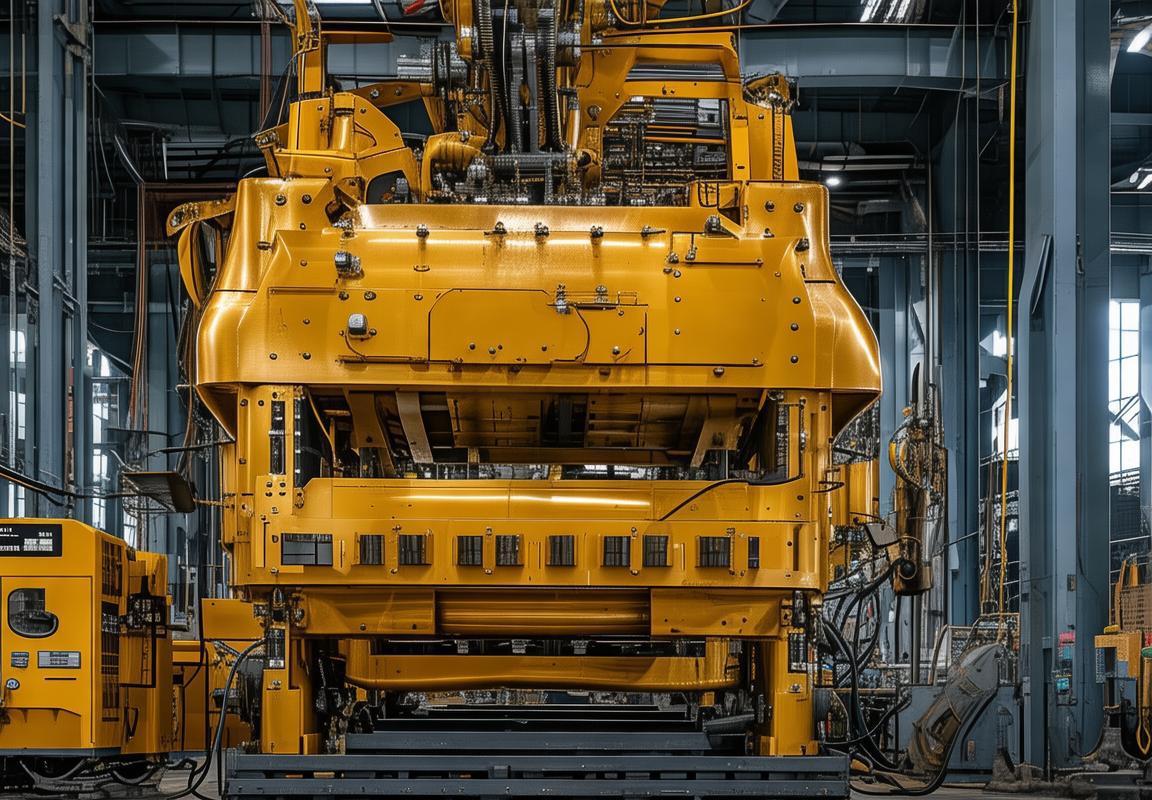
TheBasicsofHydraulicPresses
Hydraulic presses have become a cornerstone in modern manufacturing processes, their power and precision enabling a wide range of applications. To understand their significance, it’s essential to delve into the basics of how these impressive machines operate.
The heart of a hydraulic press is the hydraulic system, which is designed to convert mechanical force into pressure. This is achieved through the use of liquids, typically oil, which are chosen for their ability to withstand high pressure and temperature while remaining relatively incompressible. The system’s efficiency and the strength it can generate are what make hydraulic presses so versatile.
At the core of the hydraulic press is the cylinder, a hollow tube that serves as the pressure vessel. Inside this cylinder, a piston is placed, which is connected to the ram, the part of the press that moves to apply force. When the hydraulic system is activated, the fluid is pressurized and pushed into the cylinder, causing the piston to move. This movement is what translates the fluid pressure into mechanical force.
The pump, an integral part of the hydraulic system, is responsible for circulating the fluid. It can be powered by an electric motor or, in some cases, an engine. The pump draws fluid from a reservoir, increases its pressure, and then sends it through pipes to the cylinder. The design of the pump can vary, but the goal is always to maintain a consistent flow and pressure to ensure the press operates efficiently.
The motor driving the pump is crucial for the press’s operation. It provides the energy needed to create the pressure in the hydraulic system. The choice of motor can range from electric to diesel, depending on the power requirements and the environment in which the press is used. Electric motors are commonly used due to their reliability and efficiency, especially in automated systems.
Control systems are another vital component of hydraulic presses. These systems allow operators to regulate the pressure, speed, and movement of the press. Advanced control systems can be computerized, enabling precise adjustments and programming for different tasks. Such systems also contribute to the safety of the machine, providing emergency stop features and monitoring the operational parameters.
The frame and base of a hydraulic press are designed to support the entire structure and ensure stability. These components must be robust enough to withstand the immense forces exerted during the pressing process. The frame typically consists of steel or other heavy-duty materials that aretogether to form a rigid structure. The base, on the other hand, is designed to distribute the weight evenly and provide a solid foundation for the press.
The efficiency of a hydraulic press is not just about the power it can generate but also about how effectively it converts that power into useful work. This is where the design of the press comes into play. The size and capacity of the cylinder, the type of pump, and the material used for the components all influence the press’s efficiency. High-quality materials and precision engineering are key to maximizing the press’s performance.
In the world of hydraulic presses, the term “tonnage” is often used to describe the machine’s capability. Tonnage refers to the maximum force the press can exert, measured in tons. This is a critical factor for determining the type of work the press is suited for. For instance, a press with a lower tonnage is ideal for lighter tasks like bending or forming, while a higher tonnage press is better suited for heavy-duty operations like forging or stamping.
The versatility of hydraulic presses is another of their defining characteristics. They can be designed for specific applications, such as metal forming, plastic molding, or even the assembly of components. The ability to customize the press’s capabilities makes it a valuable tool in a wide range of industries.
In conclusion, the basics of hydraulic presses revolve around the principles of hydraulics, the components that make them function, and the control systems that allow for precision and safety. Understanding these elements is essential for anyone involved in the design, operation, or maintenance of these powerful machines.
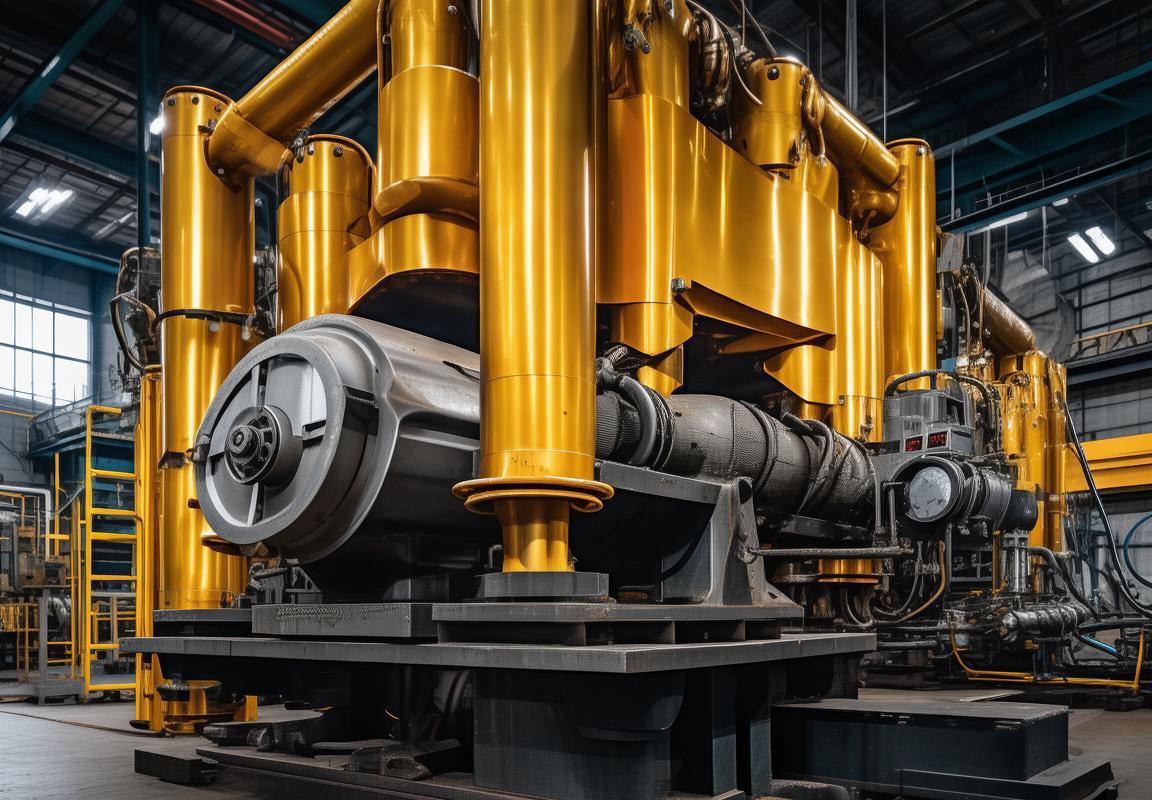
ComponentsofaHydraulicPress
In the intricate world of hydraulic press manufacturing, the components that make up these robust machines are the backbone of their functionality. Let’s delve into the essential parts that come together to create a hydraulic press.
The heart of any hydraulic press is the cylinder, a cylindrical tube that houses the piston. This cylinder is typically made from high-strength steel to withstand the immense pressure exerted during the press’s operation. It’s designed with precision to ensure that the piston moves smoothly and efficiently, allowing for consistent force distribution.
The piston, a reciprocating rod or plate, is the part that moves within the cylinder. It’s the component that directly applies force to the workpiece. Pistons come in various designs, such as single-acting or double-acting, depending on how they’re used. In a single-acting press, the piston moves in one direction, while in a double-acting press, it can move in both directions, providing greater versatility.
The pump is the workhorse of the hydraulic system, responsible for circulating the hydraulic fluid. It converts mechanical energy into hydraulic energy, creating the pressure needed to move the piston. There are different types of pumps, including gear pumps, vane pumps, and plunger pumps, each with its own advantages and applications. The choice of pump depends on factors like flow rate, pressure, and the specific requirements of the press.
The motor is the power source that drives the pump. It could be an electric motor, diesel engine, or even a steam turbine, depending on the size and power requirements of the hydraulic press. The motor’s efficiency and reliability are crucial for the press’s performance, as it must consistently supply the necessary power to the pump.
Control systems are the brain of the hydraulic press, managing the operation of all its components. These systems can be simple or complex, depending on the press’s capabilities. They include valves, switches, and sensors that regulate the flow of hydraulic fluid, control the pressure, and ensure the safety of the operator. Modern hydraulic presses often feature advanced control systems that allow for precise adjustments and automated processes.
The frame and base of a hydraulic press are the structural components that provide stability and support. The frame is typically made from heavy-duty steel and is designed to withstand the forces exerted during the press’s operation. The base, which is bolted to the floor, ensures that the press remains stationary and provides a solid foundation for the entire machine.
Hydraulic cylinders are another critical component, providing the mechanical advantage needed to move heavy loads. They come in various sizes and configurations, including telescopic cylinders that can extend and retract to accommodate different workpiece heights. The cylinders are sealed to prevent leaks and are often equipped with rod ends and seals to protect against wear and tear.
Piping and hoses are the veins and arteries of the hydraulic system, carrying the hydraulic fluid to and from the pump, cylinder, and other components. They must be designed to withstand high pressure and temperature variations. The quality of the piping and hoses can significantly impact the press’s performance and lifespan.
Safety features are integral to the design of hydraulic presses. These include emergency stop buttons, pressure relief valves, and safety guards to protect operators from moving parts. The presence of these features ensures that the press operates safely and meets the necessary regulatory standards.
Finally, seals and gaskets play a crucial role in maintaining the integrity of the hydraulic system. They prevent leaks and ensure that the hydraulic fluid remains contained within the system. High-quality seals are essential for the longevity and reliability of the press.
In summary, the components of a hydraulic press are meticulously designed and engineered to work in harmony, providing the power, precision, and safety required for a wide range of industrial applications. From the robust cylinder and piston to the sophisticated control systems and safety features, each part contributes to the press’s ability to perform its intended tasks effectively and efficiently.
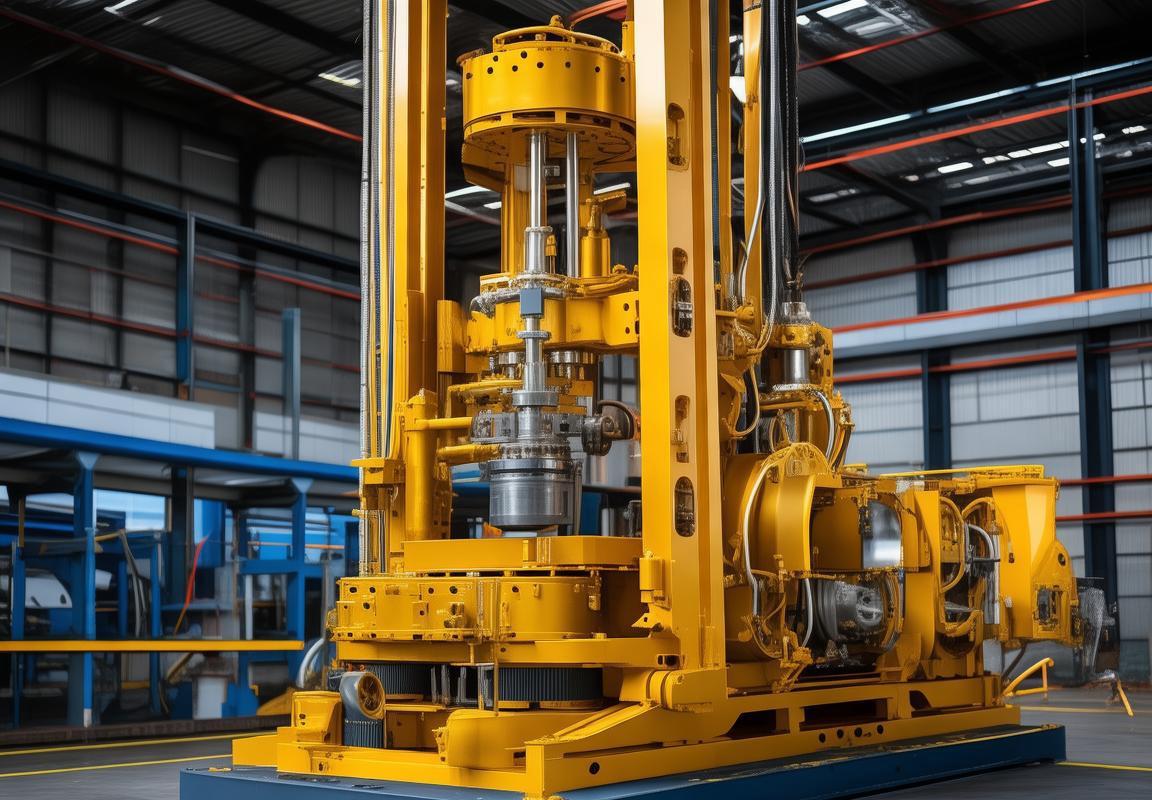
TheManufacturingProcess
In the intricate world of hydraulic press manufacturing, the journey from raw materials to a fully functional machine is a testament to precision and engineering prowess. This process involves several critical stages that ensure each hydraulic press is not just a machine but a precision tool capable of withstand intense forces and deliver consistent performance.
The initial phase of manufacturing is often referred to as the design phase. Engineers and designers meticulously map out the specifications of the press, considering factors such as the desired tonnage, the dimensions of the workpiece, and the intended applications. This step is crucial because it sets the foundation for the entire manufacturing process.
Once the design is finalized, the next step involves selecting the appropriate materials. For the frame and base, high-strength steel is typically chosen for its durability and resistance to deformation. The cylinders and pistons, which are the heart of the hydraulic system, are crafted from alloys that can withstand the extreme pressure and temperatures. The choice of materials here is not arbitrary; it must balance strength, longevity, and cost-effectiveness.
The actual manufacturing process begins with the cutting and shaping of the materials. Steel plates are cut to size and shape using precision machinery like plasma cutters or water jet cutters. These cuts are then carefully checked for accuracy, as any misalignment can lead to performance issues down the line.
After cutting, the materials are ready for the welding stage. Skilled welders join the steel components together, ensuring that the joints are strong and free from defects. The welding process is monitored closely, as the integrity of the press depends on the quality of these welds. Post-welding, the components often undergo heat treatment to relieve stress and improve their mechanical properties.
Once the frame and base are assembled, the focus shifts to the hydraulic system. This system includes the pump, motor, cylinder, and various valves and controls. The pump is responsible for generating the hydraulic pressure, and the motor drives it. The cylinder and piston are the components that exert the pressure on the workpiece. These parts are precision-machined to ensure a perfect fit and optimal performance.
The valves play a critical role in controlling the flow of hydraulic fluid, directing it to the cylinder to create pressure or away from it to release pressure. The control systems, which can be as simple as manual levers or as complex as programmable logic controllers (PLCs), allow operators to manage the press with precision. These systems are designed to be user-friendly and to provide safety features that prevent overloading and ensure the operator’s well-being.
Once the hydraulic system is integrated, the assembly is thoroughly tested. Engineers subject the press to a series of stress tests to ensure that it can handle the intended loads without failure. This includes tests for pressure, durability, and leak resistance. Any issues that arise during testing are addressed immediately, often requiring adjustments to the design or the manufacturing process.
After passing the initial tests, the press moves on to the finishing stages. This includes the application of coatings to protect the metal surfaces from corrosion and wear. The surface finish is also important for aesthetics and to prevent any damage to the workpiece. The final touches include the installation of electrical components, such as wiring and control panels, which are essential for the press to function properly.
Throughout the manufacturing process, quality control is paramount. Inspectors at every stage check the components and assembled parts for conformance to the design specifications. This includes dimensional checks, material property tests, and performance evaluations. Any deviations from the standards are meticulously documented and corrected.
Once all components have passed their respective quality checks and the assembly is complete, the hydraulic press is ready for final inspection. This final inspection is a comprehensive review of the entire machine, ensuring that everything from the frame to the control panel meets the stringent requirements set by the engineering team.
The manufacturing process of a hydraulic press is a blend of art and science, requiring a keen eye for detail, advanced technical skills, and a commitment to excellence. From the design phase to the final inspection, each step is crucial in producing a machine that is not only powerful but also reliable and precise.
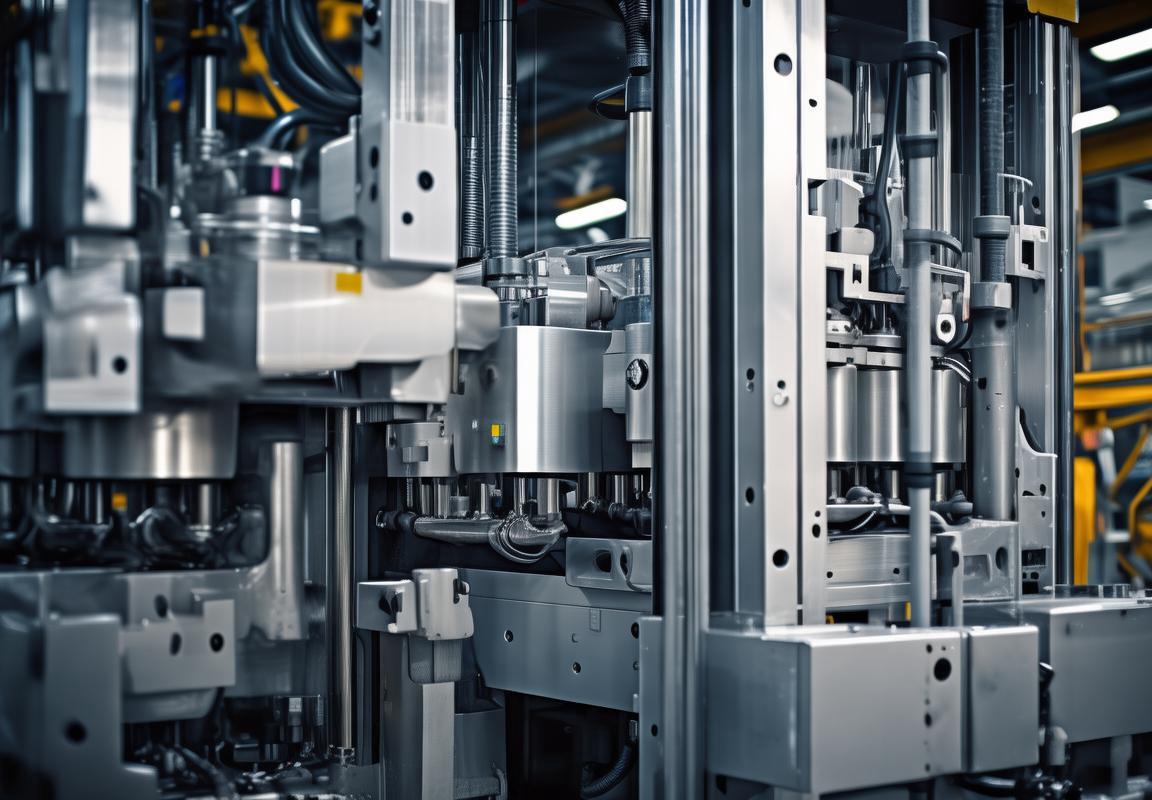
TheImportanceofPrecisioninManufacturing
In the intricate world of hydraulic press manufacturing, precision is the cornerstone of success. Every component, every assembly, and every process must be meticulously executed to ensure the final product meets the highest standards. Let’s delve into why precision is so crucial in this field.
Accuracy in DesignThe design phase is where the seeds of precision are sown. Engineers must meticulously calculate the forces, pressures, and movements that the hydraulic press will encounter. The design must account for the materials being worked on, the desired outcome, and the environmental conditions. Even the smallest miscalculation can lead to structural weaknesses or inefficiencies in the press’s performance.
Material SelectionThe choice of materials is critical in maintaining precision. Steel, for instance, is a common material due to its strength and durability. However, the specific grade of steel used will depend on the intended application and the required lifespan of the press. The wrong material can lead to premature wear, loss of structural integrity, or failure under pressure.
Machining TechniquesOnce the materials are selected, the next step is to shape them into the necessary components. Machining techniques, such as milling, turning, and grinding, play a vital role in ensuring the precision of these parts. The tolerances for these processes can be incredibly tight, sometimes measured in micrometers. Any deviation can affect the press’s ability to perform its tasks accurately and safely.
Assembly and CalibrationAfter the parts are machined, they must be assembled. This process requires a keen eye for detail and the use of precision tools. Each component must fit perfectly with its counterpart, and any misalignment can lead to binding, uneven pressure distribution, or even catastrophic failure. Calibration is a critical step where the press is tested and adjusted to ensure that it operates within the specified parameters.
Testing and Quality ControlThroughout the manufacturing process, rigorous testing and quality control measures are essential. This includes pressure testing to ensure the press can handle the maximum force it’s designed for without failure. Leak testing is also crucial to prevent hydraulic fluid from escaping, which could compromise the press’s performance and safety. Quality control checks are performed at every stage to catch any defects early.
Durability and ReliabilityPrecision in manufacturing is not just about meeting specifications at the time of assembly; it’s about ensuring the hydraulic press remains reliable over its lifespan. The components must be designed and manufactured to withstand the stresses of repeated use, environmental factors, and potential accidents. A press that fails due to a lack of precision can lead to costly downtime and damage to the products being processed.
Cost EfficiencyPrecision in manufacturing also translates to cost efficiency. By producing components with tight tolerances, manufacturers can reduce waste and the need for frequent maintenance or repairs. This not only saves money in the long run but also ensures that the press operates at peak efficiency, delivering consistent results.
Innovation and Continuous ImprovementThe pursuit of precision in hydraulic press manufacturing also drives innovation. New materials, advanced machining techniques, and sophisticated software are constantly being developed to push the boundaries of what is possible. Continuous improvement is a hallmark of successful manufacturers, who understand that even the smallest advancements can lead to significant improvements in the quality and performance of their products.
In conclusion, precision is the backbone of hydraulic press manufacturing. It ensures safety, reliability, efficiency, and cost-effectiveness. The meticulous attention to detail that goes into every aspect of the manufacturing process is what sets high-quality hydraulic presses apart from their less precise counterparts.

ApplicationsofHydraulicPresses
Hydraulic presses are marvels of mechanical engineering, capable of exerting immense force to shape, mold, and form materials into a wide range of products. Their applications span across various industries, each leveraging the power of hydraulics to achieve precise and efficient manufacturing processes. Here’s a glimpse into the diverse uses of hydraulic presses:
In the automotive industry, hydraulic presses are instrumental in the production of complex components like engine blocks and cylinder heads. These presses can apply the necessary pressure to join different metal parts, ensuring tight tolerances and a seamless fit. The high force exerted by hydraulic presses allows for the creation of intricate designs and structures that are critical for the performance and longevity of vehicles.
The aerospace sector also relies heavily on hydraulic presses for the manufacturing of aircraft components. From wing ribs to landing gear, these presses can handle the immense forces required to bond materials, such as composites and metals, together. The precision of hydraulic presses is crucial in aerospace, as even a small error can lead to catastrophic failures in the air.
In the metalworking industry, hydraulic presses are a staple for forming and stamping operations. They can deform metal sheets into various shapes, from simple bends to complex contours. The ability to apply consistent pressure over large areas makes hydraulic presses ideal for high-volume production of items like car doors, roof panels, and electrical enclosures.
The packaging industry uses hydraulic presses to manufacture boxes, cartons, and other containers. These presses can fold and seal materials with precision, ensuring that the packaging is not only functional but also aesthetically pleasing. The flexibility of hydraulic presses allows for the production of a wide range of packaging sizes and styles to meet market demands.
In the medical field, hydraulic presses play a vital role in the production of prosthetics and orthopedic devices. These devices must fit perfectly to the patient’s body, and hydraulic presses can create intricate shapes with high accuracy. The gentle yet powerful pressure exerted by these presses helps to form materials like plastics and metals into custom-fitted components.
The rubber and plastics industry depends on hydraulic presses for molding and extrusion processes. These presses can shape materials into hoses, seals, and other products used in automotive, industrial, and consumer goods. The consistency and reliability of hydraulic presses ensure that these products meet the strict quality standards required for durability and performance.
In the construction industry, hydraulic presses are used for the production of precast concrete elements. These elements, such as beams, columns, and slabs, are formed under high pressure to achieve the desired strength and shape. The use of hydraulic presses in precasting allows for faster construction times and improved structural integrity.
The energy sector utilizes hydraulic presses for the manufacturing of turbine blades and other components that require precise shaping and high-strength materials. The ability of hydraulic presses to handle extreme temperatures and pressures makes them essential in the production of these critical components.
Even in the food industry, hydraulic presses have found a niche. They are used for the production of extruded snacks and cereals, where the precise control over pressure and temperature is crucial for achieving the desired texture and consistency.
In summary, the applications of hydraulic presses are vast and varied, reflecting their versatility and the power they bring to the manufacturing process. From the smallest parts to the largest structures, hydraulic presses continue to be a cornerstone of modern industrial production.
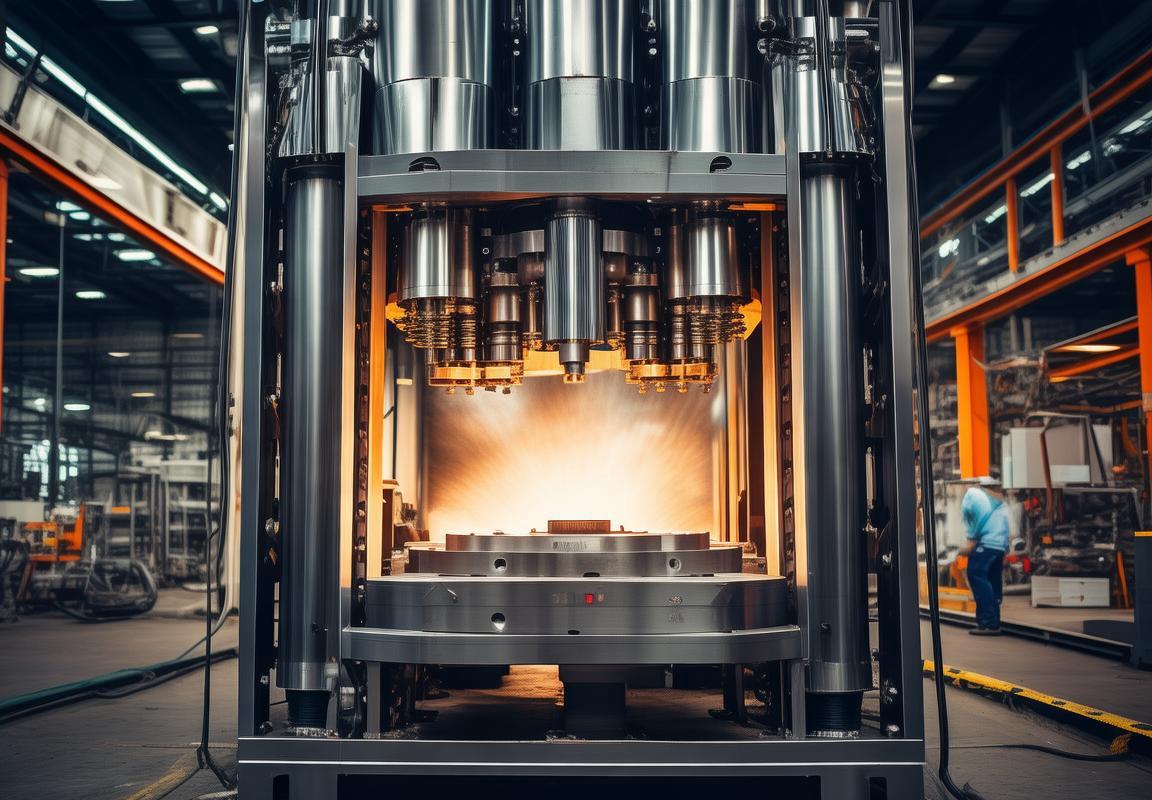
SafetyandMaintenance
Hydraulic presses are robust machines that demand careful attention to safety and regular maintenance to ensure their longevity and optimal performance. Ensuring that these presses operate safely is paramount, not only to protect the workers but also to prevent costly downtime and potential accidents. Here’s an in-depth look into the aspects of safety and maintenance:
The Necessity of Safety TrainingSafety should be the cornerstone of any hydraulic press operation. Employees must undergo thorough training to understand the risks associated with working around these powerful machines. This training includes the correct use of personal protective equipment (PPE), recognizing the signs of potential failure, and the procedures to follow in the event of an emergency.
Regular Visual InspectionsDaily visual inspections are crucial for detecting any signs of wear or damage that could compromise the press’s operation. This includes checking for leaks, loose bolts, unusual noises, or any alterations in the machine’s appearance. Even small cracks or dents in the press frame can lead to catastrophic failures if not addressed promptly.
Maintaining Pressure SystemsThe hydraulic system is the heart of a hydraulic press, and it must be kept in excellent condition. Regular maintenance involves checking the integrity of the hoses, checking for leaks, and ensuring that all seals are in good shape. It’s also essential to verify that the pressure relief valves are functioning correctly to prevent over-pressurization.
Lubrication SchedulesLubrication is key to reducing wear and tear on moving parts. A well-maintained lubrication schedule helps to prevent premature component failure. The correct type and quantity of lubricant should be used, and the schedule should be followed precisely to ensure that all parts receive the necessary protection.
Electronic Monitoring SystemsModern hydraulic presses often come equipped with electronic monitoring systems that can provide real-time data on the machine’s performance. These systems can alert operators to potential issues before they become critical, allowing for proactive maintenance rather than reactive repairs.
Safe Operating Procedures (SOPs)Establishing and adhering to SOPs is vital. These procedures should cover the correct starting and stopping of the press, the handling of materials, and the correct placement of guards and safety interlocks. SOPs also address the correct sequence of operations to prevent accidents and ensure efficient production.
Emergency Stop and Lockout/Tagout ProceduresEvery hydraulic press should have a clearly accessible emergency stop button. Operators must know where it is and how to use it in an emergency. Additionally, lockout/tagout procedures are essential when performing maintenance or repairs to ensure that the press cannot be activated accidentally.
Regular Audits and InspectionsPeriodic audits of the safety equipment and systems should be conducted. This includes checking the condition of safety guards, emergency equipment, and ensuring that all safety protocols are up to date and being followed correctly.
Documentation and Record KeepingMaintaining detailed records of maintenance activities, inspections, and any repairs is critical. This documentation serves as a history of the machine’s maintenance and can be invaluable for troubleshooting and ensuring compliance with regulatory standards.
Addressing Potential HazardsEvery aspect of the hydraulic press operation should be reviewed for potential hazards. This includes evaluating the risk of pinch points, ensuring that all moving parts are properly guarded, and that the workspace is free from obstructions that could cause accidents.
Employee InvolvementEmployees should be encouraged to report any unsafe conditions or concerns they observe. A culture of safety where everyone feels responsible for the well-being of their colleagues can significantly reduce the risk of accidents.
Upgrading Safety FeaturesAs technology advances, new safety features become available. Regularly reviewing and updating safety equipment to include the latest advancements can greatly enhance the safety of hydraulic press operations.
Compliance with StandardsIt’s essential to stay compliant with local and international safety standards. This involves understanding the regulations, obtaining the necessary certifications, and ensuring that the hydraulic press and its operation meet all legal requirements.
By focusing on these aspects of safety and maintenance, the risks associated with hydraulic presses can be significantly reduced, leading to a safer working environment and more efficient operations.

TheFutureofHydraulicPressManufacturing
Thepress manufacturing industry is on the cusp of exciting transformations. As technology evolves, so does the future of hydraulic presses, promising increased efficiency, precision, and adaptability.
The integration of advanced materials, such as lightweight alloys and composites, is shaping the future of hydraulic presses. These materials not only enhance the durability and strength of the presses but also reduce their overall weight, making them more versatile for various applications.
Innovation in design is pushing the boundaries of what hydraulic presses can achieve. Engineers are now experimenting with modular designs, allowing for easier upgrades and customization. This approach means that businesses can tailor their presses to specific needs, optimizing their performance and longevity.
Energy efficiency is another critical area where hydraulic press manufacturing is advancing. New systems are being developed to minimize energy consumption, reducing costs and environmental impact. Smart sensors and predictive maintenance are becoming standard, ensuring that presses operate at peak efficiency.
Automation is not just a buzzword; it’s a reality shaping the future of hydraulic presses. Robotics and AI are being integrated into the manufacturing process, from design to assembly and operation. This automation not only increases productivity but also enhances safety and precision.
The rise of Industry 4.0, or the Industrial Internet of Things (IIoT), is changing the landscape of hydraulic press manufacturing. With interconnected devices, data analytics can provide valuable insights into machine performance, leading to predictive maintenance and reduced downtime.
Customization is becoming more accessible as the technology evolves. Software advancements allow for easier integration of customer-specific designs and requirements. This means that manufacturers can cater to niche markets and offer highly specialized hydraulic presses.
Collaborative robots, or cobots, are poised to play a significant role in the future. These robots can work alongside human operators, providing assistance in tasks that require both precision and adaptability. This partnership not only increases productivity but also ensures a safer working environment.
Innovation in cooling systems is also a focus. As hydraulic presses generate significant heat during operation, effective cooling is crucial for maintaining performance and lifespan. New cooling technologies are being developed to dissipate heat more efficiently, keeping the presses running smoothly.
The future of hydraulic press manufacturing is also about sustainability. Eco-friendly materials and manufacturing processes are being explored to reduce the carbon footprint of hydraulic press production. This includes the use of biodegradable materials, energy-efficient manufacturing, and recycling programs.
Lastly, the global market is driving the evolution of hydraulic press technology. As industries around the world seek to improve their production processes, the demand for advanced hydraulic presses is growing. This global competition is fueling the continuous improvement and innovation in the field.
The future of hydraulic press manufacturing is a blend of cutting-edge technology, sustainability, and customer-centric design. It’s an exciting time to be part of an industry that is constantly pushing the boundaries of what’s possible.